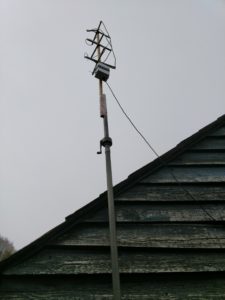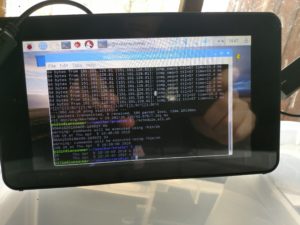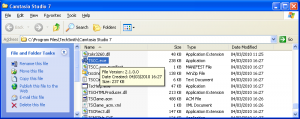Having previously built a full blown PC based weather station, I was keen to see if the Raspberry Pi was powerful enough to decode signals from an APT satellite like the American NOAA 15, 18 and 19. A solar powered weather station is the end goal, but the first step was to set up the receiver – from my other projects, I already had the home made QFH Antenna and a USB SDR.
Then I found this great article on instructables which describes, step by step, how to set up the Raspberry Pi with the right software (predict, wxtoimg, sox and a few other packages).
Once the Pi was all set up, including the scripts and cron table update to automatically enable the receiver when a satellite was passing overhead, I needed to link the pi to the QFH antenna and SDR dongle.
The trick to getting a decent result is to maximise the Signal to Noise ratio – by keeping the cables carrying signal short and by minimising the noise received by the SDR dongle. In the image above, the SDR dongle is inside the plastic box, processing the signal as close to the antenna as possible. A USB extension cable is then seen coming out of the box – this is then connected to the base station.
Connecting the QFH Antenna to the Raspberry Pi
Using the USB connection is easy enough but the Pi needed an internet connection to update the satellite pass predictions, so it knows when the satellites are passing overhead.
Getting a WiFi link to work all the way to the Pi was tricky, but I have an extender established so once I managed to get the Pi a line of sight to the house, we were good to go!
Some of the results from the last few days are below, there are about two passes per day that have a Maximum Elevation Level (MEL) greater than 20 degrees so there is a wide variety of quality.
Overall the Raspberry Pi performs extremely well in this role, better than the rather weedy Intel i3 powered PC that was previously set up. Next step is to add the Sense Hat and possibly air quality sensors to the rig – and get on the Weather Underground.
Raspberry Pi Weather Station with Satellite Capability – Results
A few images using a basic false colour rendering for land/sea, showing the cloud cover over the UK and Europe.










